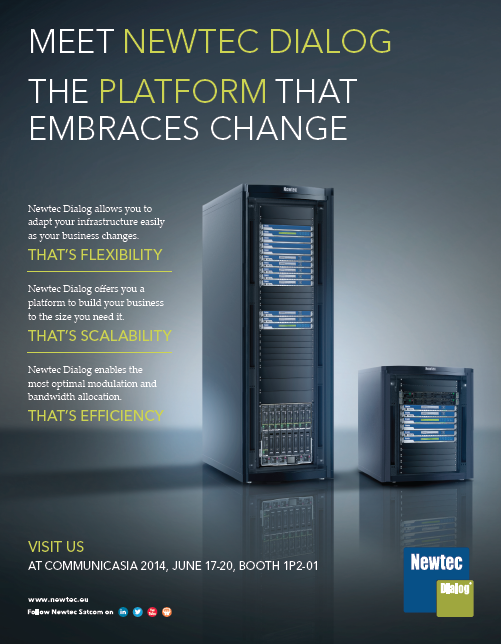Accessing satellite services for M2M is becoming less of a “nice to have” feature and more of a necessity in many M2M applications. Recently, KORE Wireless added Inmarsat Satellite Services to the company’s M2M Global Connect product range. This action has, once again, sparked a number of questions from customers regarding the decision—“Should I be adding satellite to my current M2M device range?”

A typical scenario customers have been thinking about is the addition of satellite services for a short period of time—however, this consideration for such services, in many cases, was several years ago and, at that time, they ultimately decided it was too difficult and expensive to implement.
Now, the good news is that the technology has become far more cost effective and easier to incorporate and satellite capabilities are only going to improve with time.
The are a number of benefits for satellite incorporation…
• Truly Global Coverage—Reduces the need to worry about crossing borders or operating devices in remote areas that may not have
cellular coverage. This is, of course, network dependent, as some are fully ‘pole to pole,’ such as Iridium, while others focus more on populated latitude bands (e.g., Orbcomm and Inmarsat).
• Single SKU—Satellite devices are not region dependent. Unlike GSM, where a company shipping globally may have several different
SIM cards or modems with different operating frequencies, they can be deployed anywhere and with the same modem.
• Single Data Price—With satellite, the data fee is the same, regardless of where your device is located. Once testing is complete, you will
know exactly how much a device will cost you to operate per month, regardless of the location.
Yes, there are also challenges to consider…
• Cost—Despite hardware and data costs dropping significantly in the past few years, satellite is still more expensive than GSM. For example,
hardware for the Iridium Short Burst Data (SBD) Network can range from around $200 to $1,000, depending upon the type of device and
volumes ordered.
• Size—While many GSM modules are adhering to a fairly similar form factor, satellite hardware comes in all shapes and sizes (usually
substantially larger than a GPRS module). This often means re-engineering your product to incorporate a modem into your current housing.
Size can also expand to “sprawl,” as your device will often need to be connected to an external antenna that has a clear view of the sky.
• Programming—I know a few engineers who might mark this as a positive as they love a challenge, but I’ll keep it in the “Challenges”
department for now. One of the major hurdles we come across is customers trying to translate what they do over GSM to satellite; this is often
why people view satellite as an expensive alternative.
If you want an effective solution, spend time reprogramming the behavior and data delivery methods you currently incorporate on GSM. For example, one of our customers had a GSM device that roughly transmitted around 2 to 3MB of data per month. The customer asked how much that would cost on our Iridium SBD service and promptly crumpled upon being told the price. With a better understanding of how to use satellite and some smart changes to their device, they now use around 20 to 30KB per month over Iridium SBD, which is far more practical.
Once you’ve decided that the benefits outweigh the potential challenges, it’s time to decide on the network that will provide the type of connectivity you need. This comes down to the type of data you want to transmit and how you want that data to behave.
What follows are some of the basic factors involved in transmission and how each application can be used when making the move from GSM to satellite.
Transmission Types
One Way (Simplex)—Simplex services can only broadcast data, they cannot respond to it. This type of communication is typically seen in simple alert systems for distress or location.
Two Way (Duplex)—Duplex allows devices to communicate in both directions between the server and the device in the field. This is becoming the preferred design for Satellite M2M devices as it allows the receiver to respond with a command or message.
Short Messaging—This system is more analogous to SMS than GSM data transmission as it allows short packets of data to be sent across a satellite network. These strings are often a few bytes to a few kilobytes depending on the payload (typically used for location strings, alerts, messages and data collection). Examples of this are the Iridium SBD and the Inmarsat IDP services.
IP Communication—This is essentially the GPRS or 3G equivalent communication over a Satellite Network. This allows for longer communication sessions and larger amounts of data to be passed between devices. This is typically used for remote device operation, large data transfer media and continuous communications. Examples are the Inmarsat BGAN and Thuraya IP+ services.
Now a provider must be selected. Keep in mind that all satellite providers behave slightly differently and there are very few devices that support multiple providers, so once you’ve made the decision, transitioning to another provider can be a costly operation.
Here are some examples of M2M satellite providers in alphabetical order (This list is in no way exhaustive and is not designed to be a replacement for your own research)
Globalstar (http://www.globalstar.com/)—The Globalstar Simplex messaging system is a cost effective way to send single transmissions from remote locations. Globalstar is most recognizable for its support of the SPOT emergency personal communications system.
Inmarsat (http://www.inmarsat.com/)—There are a variety of Inmarsat communication options for M2M devices that include IP Communication using their Broadband Global Area Network (BGAN) service or a short messaging service using their IsatData Pro (IDP) service. (KORE recently signed an agreement to add Inmarsat services to our Global Connect Service and they will be available in 2014).
Iridium (http://www.iridium.com)—Iridium delivers a Short Burst Data (SBD) messaging service for M2M via 66 Low Earth Orbit (LEO) satellites. Iridium allows duplex communication between devices and is ideal for most remote M2M applications that require small to moderate amounts of data. (KORE provides Iridium SBD airtime through the Global Connect Service).
ORBCOMM (http://www.orbcomm.com/)—ORBCOMM provides a duplex short messaging service capable of sending short alphanumeric packets of data between six bytes and several kilobytes, in near real-time, allowing users to access critical information readily.

Thuraya (http://www.thuraya.com/)—Thuraya provides a satellite IP communication service that covers Asia-Pacific, The Middle East, Africa and Europe. Thuraya terminals allow speeds of up to 444kbps and are typically used in media and maritime applications. This network is essentially GPRS over satellite.
Once you’ve selected your provider and completed a considerable amount of homework, deploying a satellite device is usually a fairly simple process. After your device is calibrated for your selected network, you can purchase a monthly or pay per use data plan (much like GSM) and start deploying services.
About the author
James Mack is responsible for expanding the KORE brand across APAC through advertising, sales engagement and digital marketing. James comes from a B2B software and infrastructure background having worked on marketing strategies with leading companies from the USA, UK, Singapore, Japan & Australia.
* * * * * * * * *
The Logic Of BGAN
BGAN M2M uses the Inmarsat satellite network in the same fashion as the way KORE uses 3G, terrestrially. It is a full 3G core network in the air, delivered over satellite radio, although there are some differences between the two in operation, due to their delivery methods.
To engage BGAN, a customer must port their GPRS or 3G apps to satellite. KORE can assist by merging your BGAN M2M data with your GPRS/ 3G data streams into one VPN traffic path.
BGAN M2M latency is excellent for a satellite network, so there’s no major change from using cellular. I’d suggest allowing similar extra timeouts like you would, or should, do normally if using a roaming sim.
Inmarsat M2M Sales Manager for APAC, Clifford White, has emphasized many of the same considerations I have mentioned for some time—the traffic that you send is your payload plus
TCP/IP overheads. These overheads can, and usually are, a significant part of your total traffic amounts (e.g., an 8 byte payload can have as much as 80 bytes of TCP/IP message and ACK details (yes, 10 times the payload). You will always seem to be billed more than what you initially may expect.
Doing a Wireshark™ analysis of real data confirms that this is the case in more than 99 percent of BGAN M2M bill shock inquiries. Cliff’s team recommend that you do this when you first start using BGAN M2M as a sanity check on your usage. Wireshark™ shows all traffic sent, including the overheads. By the way, Wireshark is a foremost network protocol analyzer that allows you see what’s happening on your network at a microscopic level. Wireshark is the de facto (and often de jure) standard across many industries and educational institutions.
Using UDP/IP can reduce overheads by as much as 80 percent. In our experience, UDP/IP users in mobile applications use around 1/5 to 1/3 of the traffic of TCP/IP users.
Given that satellite is, by its very nature, a more expensive per byte proposition than cellular, it becomes critically important to watch every byte.
Inmarsat’s Australian Support Engineer, Mark Brockman, offers some practical and informative information regarding BGAN M2M setup, such as—BGAN terminals can use multiple APNs—it is critical that the update APN is installed in them to allow for free OTA firmware updates from the terminal manufacturers.
The Inmarsat network is geostationary. BGAN M2M, in its current format, is a fixed product. It is critical that the antenna be correctly adjusted and aligned using the internal software tools, not simply just pointed roughly at the sky—this “commissioning” makes a huge difference to overall performance.
If you would like some additional information, please contact us. You can access KORE on Twitter @KOREWireless, on LinkedIn at KORE Wireless Asia Pacific, or at our website http://www.korewireless.com.au
Sidebar by Shane Murphy, VP & General Manager Asia-Pacific, KORE Wireless


